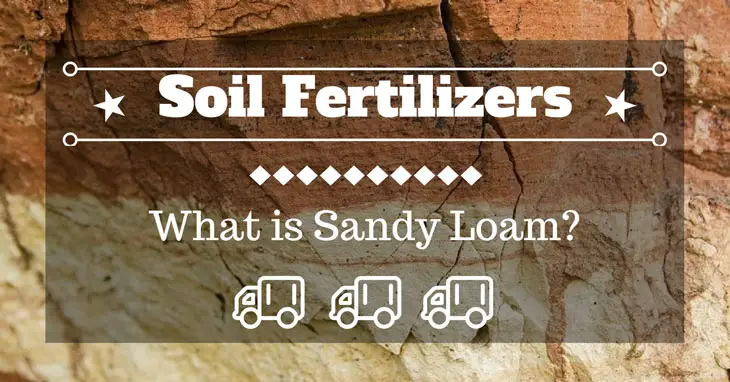What is Sandy Loam: Everything You Should Know
If you are into gardening, one of the most important considerations is the type of soil you have. Different plants grow in different types of soil. In the US, one of the commonly available growing media is the sandy loam. What is sandy loam and how should you deal with it? Those are questions that I will try to address in this article.
More...
What is Sandy Loam?
Sandy loam is typically made up of sand and a varying amount of silt and clay. More often, the sand particles are more solid and larger than all the other particles included in the mixture, allowing more room for water and air to freely move through it. The clay and sediment in the mixture provide for fertility and structure.
Sandy loams differ in appearance and texture depending on the amount and size of the sand in the mixture.

Types of Sandy Loam
There are four categories of sandy loam, namely:
- Coarse sandy loam
- Fine sandy loam
- Sandy loam
- Very fine sandy loam
To determine in which category a particular soil falls, the sand particles in the mix are measured in millimeters. The sandy loam category is made up of about 60 percent sand, 30 percent silt particles and 10 percent clay.
For gardeners, the commonly used types of soil are the sandy loam and fine sandy loam. If you want to know how these two look like, here is a description as published by the United States Department of Agriculture (USDA). The percentage describes the amount of soil moisture as a percentage of available water capacity.
0-25% - This is a dry sandy loam that forms a very weak ball. This mixture has aggregated soil grains that easily break away from the ball.
25-50% - Slightly moist, this sandy loam still forms a weak ball but when you press on it, you can see defined finger marks. It will not leave water staining on your fingers and the grains also easily break away. Compared to the first type, it is a bit darker in color.
50-75% - This is the moist type that forms a ball and will leave defined finger marks. This is a very light soil that will leave water staining on fingers. It has a darker color and will not slick.
75-100% - This a wet sandy loam that forms a ball and leaves a wet outline on the hand and light to medium staining on fingers. It does make a weak ribbon in between the thumb and forefinger.
100% - Wet and forms a soft ball with free water appearing briefly on soil surface when you squeeze or shake it. You can also see medium to heavy soil and water coating on your fingers.
Knowing these characteristics, you can easily test your garden soil for soil moisture. Depending on the percentage of soil moisture, you may need extra inches of water to refill the soil to filled capacity which is more ideal for planting.
0 – 25% - needs 1.7 to 1.0 inch of water for every foot of soil
25-50 % - needs 1.3 to 0.7 inch of water for every foot of soil
50-75% - needs 0.90 to 0.30 inch of water for every foot of soil
75-100% - needs 0.40 inch of water for every foot of soil100% - does not require water

What Makes Sandy Loam Soil Great for your Garden
Sandy loam is best for plants that require more soil drainage than regular plants. This type of soil is easy to till and can quickly drain excess water. This in turn lessens the likelihood of plant rot or growth of diseases or fungus that can badly affect the growth of the plant.
Here are some of the plants that thrive in sandy loam:
Trees – Various species of trees such as the soft maple, cottonwood, honey locust, Douglas and willow trees grow in sandy loam.
Shrubs – Looking to beautify your garden with roses? They too grow in sandy loam. Aside from roses, other shrubs that grow in this soil are the honeysuckle, sumac, juniper and hazel.
Flowers – Sandy loam is also a great choice for planting several types of flowers such as the gladiolus, different types of lilies, hostas, amaryllis and irises. Cacti also prefer sandy loam.
Fruits and Vegetables – There are also fruits and vegetables that you can grow in sandy loam. Among them are the blueberries, blackberries, strawberries, lettuce, tomatoes and peppers. A sandy loam also offers an advantage when growing herbs such as sage, basil, lemon balm, lavender, horehound and thyme.
Important Considerations When Using Sandy Loam
Because sandy loam has the ability to easily drain water, it also drains many of the important nutrients that should be available to plants.
Sandy loam requires frequent irrigation and fertilization to promote healthy plant growth. You can also improve the soil quality by adding organic fertilizer such as vermicomposts or peat moss. Adding 2 to 4 inches of these organic matters over the area where you will be planting can significantly improve the soil’s ability to hold nutrients for the plants.
Moreover, it is important to note that sand is acidic in nature. If there are too much sand in the mixture, the soil can become too acidic which is not good for many types of plants. You can use a pH tester to regularly monitor the pH level of your soil. In case your soil is too acidic, adding lime will reduce the level of acid.

Conclusion
A sandy loam is a good medium for growing many types of plants. However, if you plant the wrong species, it could spell disaster for the plant. If you are dealing with sandy loam, it is important to first identify the plants that you can grow with it. You can then consider improving the quality of soil with organic matter and then start planting.
References
http://www.southernmulch.com/article-what-is-sandy-loam.php
http://homeguides.sfgate.com/characteristics-sandy-loam-soil-50765.html
http://www.gardenguides.com/113913-sandy-loam-soil.html
Do you now have an idea on what is sandy loam? I hope this article helped you. You can share with us your thoughts by leaving a comment or question. Please feel free to also share it with your friends.

